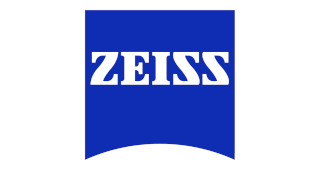Surgical-related and hardware-related adverse effects of deep brain stimulation: a retrospective single-center analysis
EANS Academy. Ucar T. 10/04/21; 339284; EP08006

Prof. Dr. Tanju Ucar
Contributions
Contributions
Abstract
Aim: To review the surgical-related and hardware-related adverse effects of DBS in a single center over the last 5 years.
Materials and methods: All patients who underwent DBS electrode implantation at Akdeniz University Hospital during the last 5 years participated in this study. Demographic information (sex, age, diagnosis, the duration between diagnosis and surgery, comorbid disease) and the date of surgery were collected from a medical electronic database. The adverse effects of DBS were classified into surgery-related complications and hardware-related complications. These adverse effects of DBS were also subdivided based on whether they occurred intraoperatively, early postoperative stage, or over a long period time.
Results: A total of 90 new DBS electrodes (60 STN, 25 GPI, and 5 VIM) in 47 patients were included in this study. The median age at the time of surgery of all patients was 54 years (range 11–75). Comorbid diseases were recorded in sixteen (34%) patients. Thirty-three patients (70.2%) had no adverse effects related to DBS. Surgical-related adverse effects were observed in five patients and of these patients, one had asymptomatic ICH, one had symptomatic intracerebral hemorrhage, one had both a seizure intraoperatively and asymptomatic subdural hemorrhage and 2 had non-infectious peri-electrode edema. Hardware-related adverse effects were recorded in nine patients (19.1%). We recorded infection in 6 (12.7%) patients, erosion without infection in 2 (4.2%) patients, and both lead fracture and lead malposition in one patient. All long-period adverse effects were related to hardware and were recorded in 8 (19%) patients.
Conclusion: Deep brain stimulation (DBS) represents today a well-established treatment for movement disorders, but was associated with an increased risk of some adverse events. We have analyzed these advers effects on this study. The most common adverse effect after DBS surgery was found a hardware-related infection in our series.
Materials and methods: All patients who underwent DBS electrode implantation at Akdeniz University Hospital during the last 5 years participated in this study. Demographic information (sex, age, diagnosis, the duration between diagnosis and surgery, comorbid disease) and the date of surgery were collected from a medical electronic database. The adverse effects of DBS were classified into surgery-related complications and hardware-related complications. These adverse effects of DBS were also subdivided based on whether they occurred intraoperatively, early postoperative stage, or over a long period time.
Results: A total of 90 new DBS electrodes (60 STN, 25 GPI, and 5 VIM) in 47 patients were included in this study. The median age at the time of surgery of all patients was 54 years (range 11–75). Comorbid diseases were recorded in sixteen (34%) patients. Thirty-three patients (70.2%) had no adverse effects related to DBS. Surgical-related adverse effects were observed in five patients and of these patients, one had asymptomatic ICH, one had symptomatic intracerebral hemorrhage, one had both a seizure intraoperatively and asymptomatic subdural hemorrhage and 2 had non-infectious peri-electrode edema. Hardware-related adverse effects were recorded in nine patients (19.1%). We recorded infection in 6 (12.7%) patients, erosion without infection in 2 (4.2%) patients, and both lead fracture and lead malposition in one patient. All long-period adverse effects were related to hardware and were recorded in 8 (19%) patients.
Conclusion: Deep brain stimulation (DBS) represents today a well-established treatment for movement disorders, but was associated with an increased risk of some adverse events. We have analyzed these advers effects on this study. The most common adverse effect after DBS surgery was found a hardware-related infection in our series.
Aim: To review the surgical-related and hardware-related adverse effects of DBS in a single center over the last 5 years.
Materials and methods: All patients who underwent DBS electrode implantation at Akdeniz University Hospital during the last 5 years participated in this study. Demographic information (sex, age, diagnosis, the duration between diagnosis and surgery, comorbid disease) and the date of surgery were collected from a medical electronic database. The adverse effects of DBS were classified into surgery-related complications and hardware-related complications. These adverse effects of DBS were also subdivided based on whether they occurred intraoperatively, early postoperative stage, or over a long period time.
Results: A total of 90 new DBS electrodes (60 STN, 25 GPI, and 5 VIM) in 47 patients were included in this study. The median age at the time of surgery of all patients was 54 years (range 11–75). Comorbid diseases were recorded in sixteen (34%) patients. Thirty-three patients (70.2%) had no adverse effects related to DBS. Surgical-related adverse effects were observed in five patients and of these patients, one had asymptomatic ICH, one had symptomatic intracerebral hemorrhage, one had both a seizure intraoperatively and asymptomatic subdural hemorrhage and 2 had non-infectious peri-electrode edema. Hardware-related adverse effects were recorded in nine patients (19.1%). We recorded infection in 6 (12.7%) patients, erosion without infection in 2 (4.2%) patients, and both lead fracture and lead malposition in one patient. All long-period adverse effects were related to hardware and were recorded in 8 (19%) patients.
Conclusion: Deep brain stimulation (DBS) represents today a well-established treatment for movement disorders, but was associated with an increased risk of some adverse events. We have analyzed these advers effects on this study. The most common adverse effect after DBS surgery was found a hardware-related infection in our series.
Materials and methods: All patients who underwent DBS electrode implantation at Akdeniz University Hospital during the last 5 years participated in this study. Demographic information (sex, age, diagnosis, the duration between diagnosis and surgery, comorbid disease) and the date of surgery were collected from a medical electronic database. The adverse effects of DBS were classified into surgery-related complications and hardware-related complications. These adverse effects of DBS were also subdivided based on whether they occurred intraoperatively, early postoperative stage, or over a long period time.
Results: A total of 90 new DBS electrodes (60 STN, 25 GPI, and 5 VIM) in 47 patients were included in this study. The median age at the time of surgery of all patients was 54 years (range 11–75). Comorbid diseases were recorded in sixteen (34%) patients. Thirty-three patients (70.2%) had no adverse effects related to DBS. Surgical-related adverse effects were observed in five patients and of these patients, one had asymptomatic ICH, one had symptomatic intracerebral hemorrhage, one had both a seizure intraoperatively and asymptomatic subdural hemorrhage and 2 had non-infectious peri-electrode edema. Hardware-related adverse effects were recorded in nine patients (19.1%). We recorded infection in 6 (12.7%) patients, erosion without infection in 2 (4.2%) patients, and both lead fracture and lead malposition in one patient. All long-period adverse effects were related to hardware and were recorded in 8 (19%) patients.
Conclusion: Deep brain stimulation (DBS) represents today a well-established treatment for movement disorders, but was associated with an increased risk of some adverse events. We have analyzed these advers effects on this study. The most common adverse effect after DBS surgery was found a hardware-related infection in our series.
{{ help_message }}
{{filter}}




